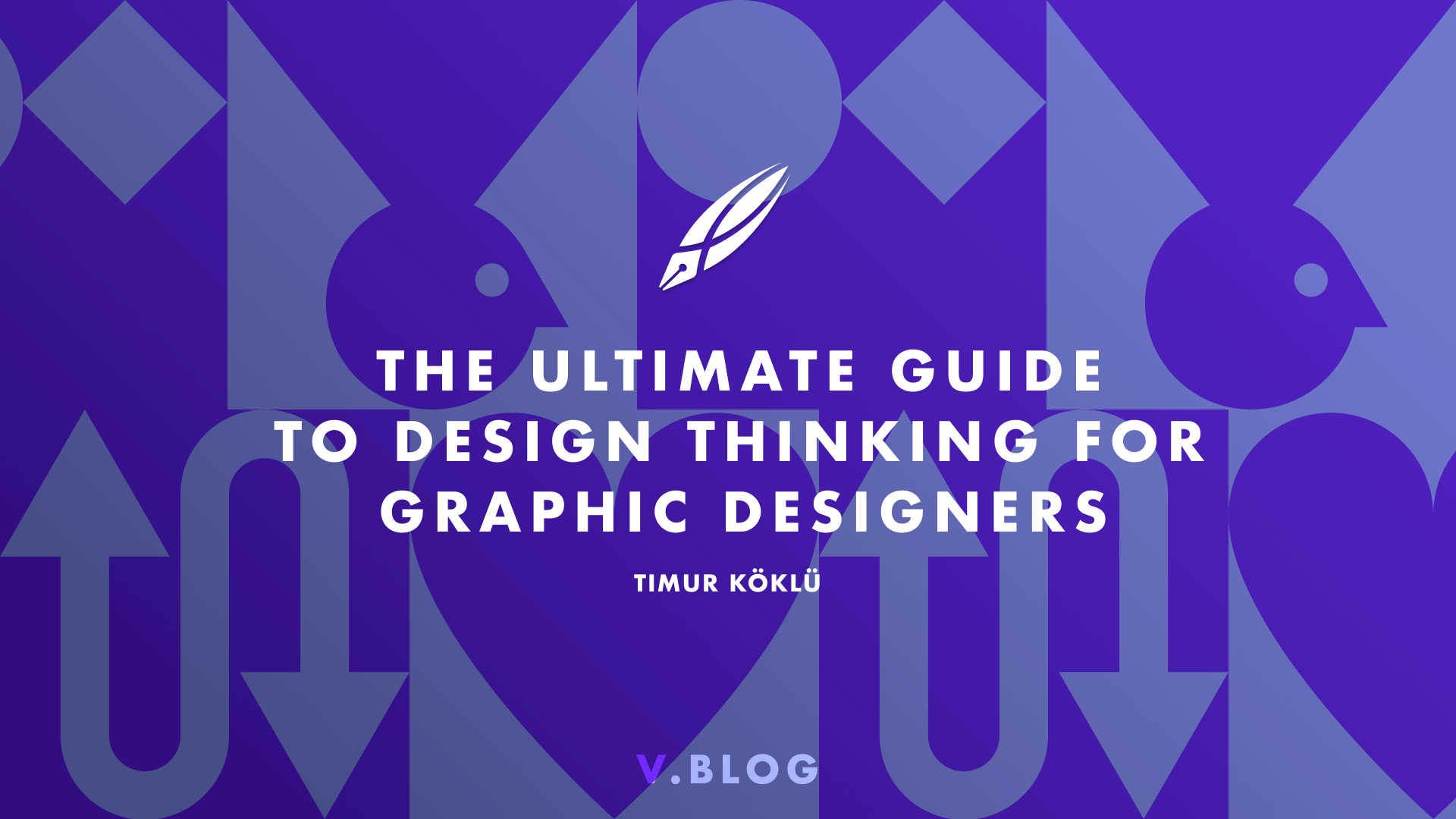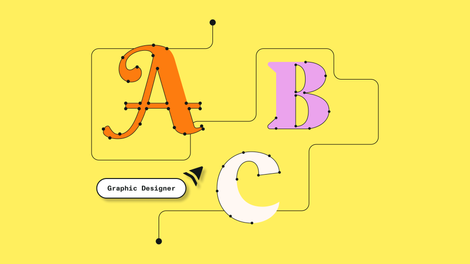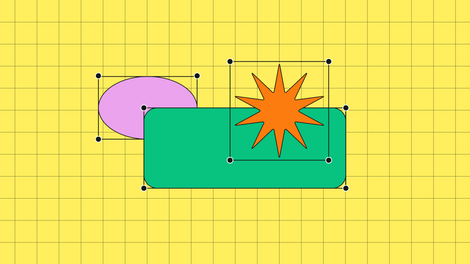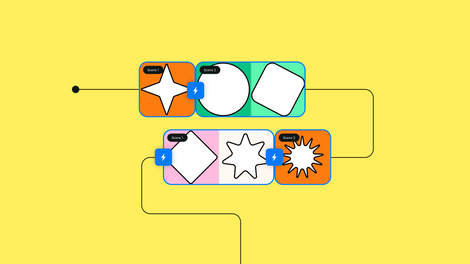When people hear about graphic designers the first associations about their work are quite predictable. Eye-catching color schemes, elegant shapes, and inventive fonts are just to name a few. In fact, the bigger part of the process like understanding client needs, prototyping, ideation, and conducting research happens before opening the graphic editor, and the aesthetics are just a final touch.
Aspects like digital assets organization, the suitable working atmosphere, and getting the tools ready (not necessarily the digital ones, pen and paper will do at the beginning of the process) also matter to arrange the effective process. But forgetting the key component that empowers innovation and creativity - the design thinking - will limit the chances of achieving outstanding results.
Jumpstart your ideas with Linearity Curve
Take your designs to the next level.
So what are the key skills to learn to master design thinking? Let’s have a closer look at them:
Empathize
Empathy is a pillar of the design thinking process. In order to improve the visual journey designers need to put themselves into the target user’s shoes to know their needs and observe their behavior interacting with similar systems. That's how the best UX design processes work. Jacob Cass, Brand Consultant at JUST Creative considers empathy to be the core of this approach.

"At the heart of design thinking is empathy. You must understand your user’s needs, their problems and challenge those assumptions to create new ideas that solve their problems creatively."
– Jacob Cass, Brand Consultant at JUST Creative
So everything starts with user research, which consists of building out the portrait of people who will use the visual assets and try to understand them.
Adopt the solution-based approach
When you gather the user data, it’s high time to start analyzing it trying to discover the patterns in their behavior to come up with a list of the pain points that need to be solved by your design solutions. The problem-solving approach starts with a clear problem statement in the written format.

The information received from the users will help you to become more user-centric and create functional design systems that will resolve certain problems like unmet needs or ignored pain points. This way, when the design has a purpose, crafting the visual elements becomes easier. When in doubt, you may always answer the question if possible solutions align with solving the problem users have or there can be better ways to handle it.
Unleash Your Creative Potential in Design
Discover the endless possibilities of illustration in design. Learn how our tools can help you create stunning, unique designs effortlessly.
Keep an open mind
Sometimes the best design solutions come from unexpected places and most often from the spheres not related to design like physics or biology. Creativity happens when you are open to everything new and can see the inspiration in everything. A great technique to develop this skill is practicing regular brainstorming sessions. Here you are just generating ideas without limiting yourself in the number of options, judging the decisions, or trying to think right away about the implementation.

When you shift the focus, try to think by analogies, and just observe how things are organized in other industries, your brain can map this knowledge on the design sphere to come with innovative solutions, that's what is called thinking outside the box. It’s really important because design standards are not set in stone, quite the opposite. The design industry is volatile, and the tendencies are constantly changing. Something that was popular one or two years ago will be no longer relevant, thus to evolve with it, you need to develop an open mind.
Ideate, prototype, and perform user testing
If you try to deliver the final designs right away, it may not be effective from the time-value point of view, because you need to put a lot more time to put everything together. But the main thing here that it does not guarantee that the proposed solution works well, and you will need to start the process from scratch as many times as necessary before you come up with the appropriate variant. Luckily, it’s possible to avoid these double efforts.
To do so, think about several low-fidelity versions aka prototypes that contain the general design concept, and test how they perform by engaging real users. Their reactions to several potential solutions will be helpful in choosing the focus and confirm your hypothesis because they are the main stakeholders of the product and if they cannot solve their issues because of the low usability, it will fail.

After user testing, there are chances that you will need to review the approach from the beginning because some elements like problem-solving are missing.
Wrap up
To sum up, these design principles are all about a user-centric approach, confirming the hypothesis with prototypes and coming with creative solutions that will be understandable and convenient for humans. It’s not a linear process that can be done in several stages that follow one another, it’s more about an iterative approach with back-and-forth discussions when you constantly brainstorm and look back at previous steps. Thus, adjustments are pretty common when the new information or experiment results reveal new facts about user behavior. It especially resonates with agile environments where people are put over the processes.
Adopting design-thinking methodology is equally important for small startups to large enterprises in any sphere be it business, IT, healthcare, or any other industry that speaks to its audience through visuals. No matter if it's a website, interfaces, or printed design materials like flyers or brochures.
The sooner people who are involved in design develop the design thinking approach the better, as they have a direct impact on product development will be delivered to the market. It helps to increase the value the final product brings to its users beneficially influencing the financial metrics, improving user experience, and overall business growth.
Jumpstart your ideas with Linearity Curve
Take your designs to the next level.
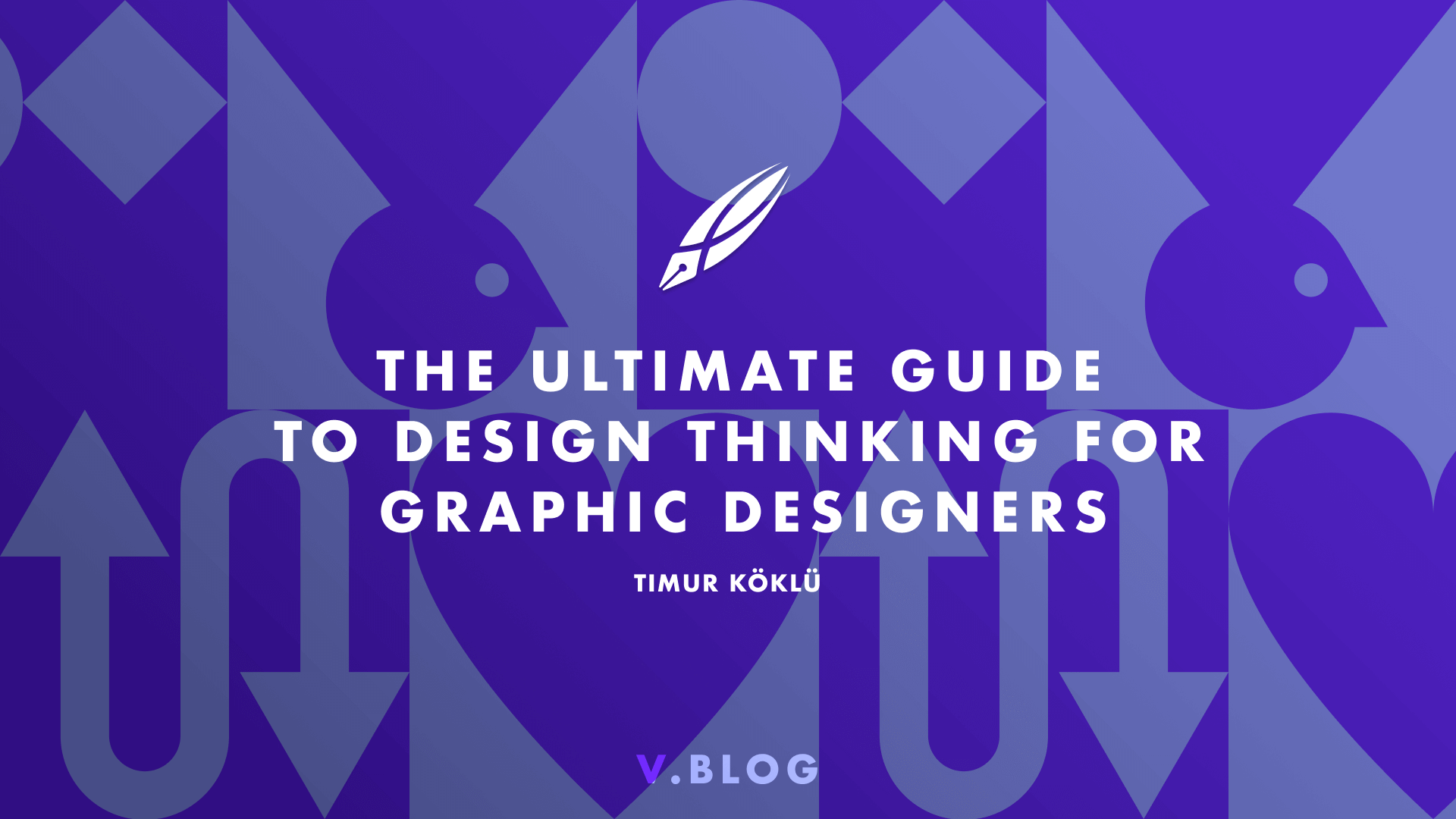

Share this!
Ben Barnhart
Ben is a Content Lead for Linearity living in Berlin. His hobbies include board games, cooking, reading, and writing.


:quality(75))
:quality(75))



:quality(75))
